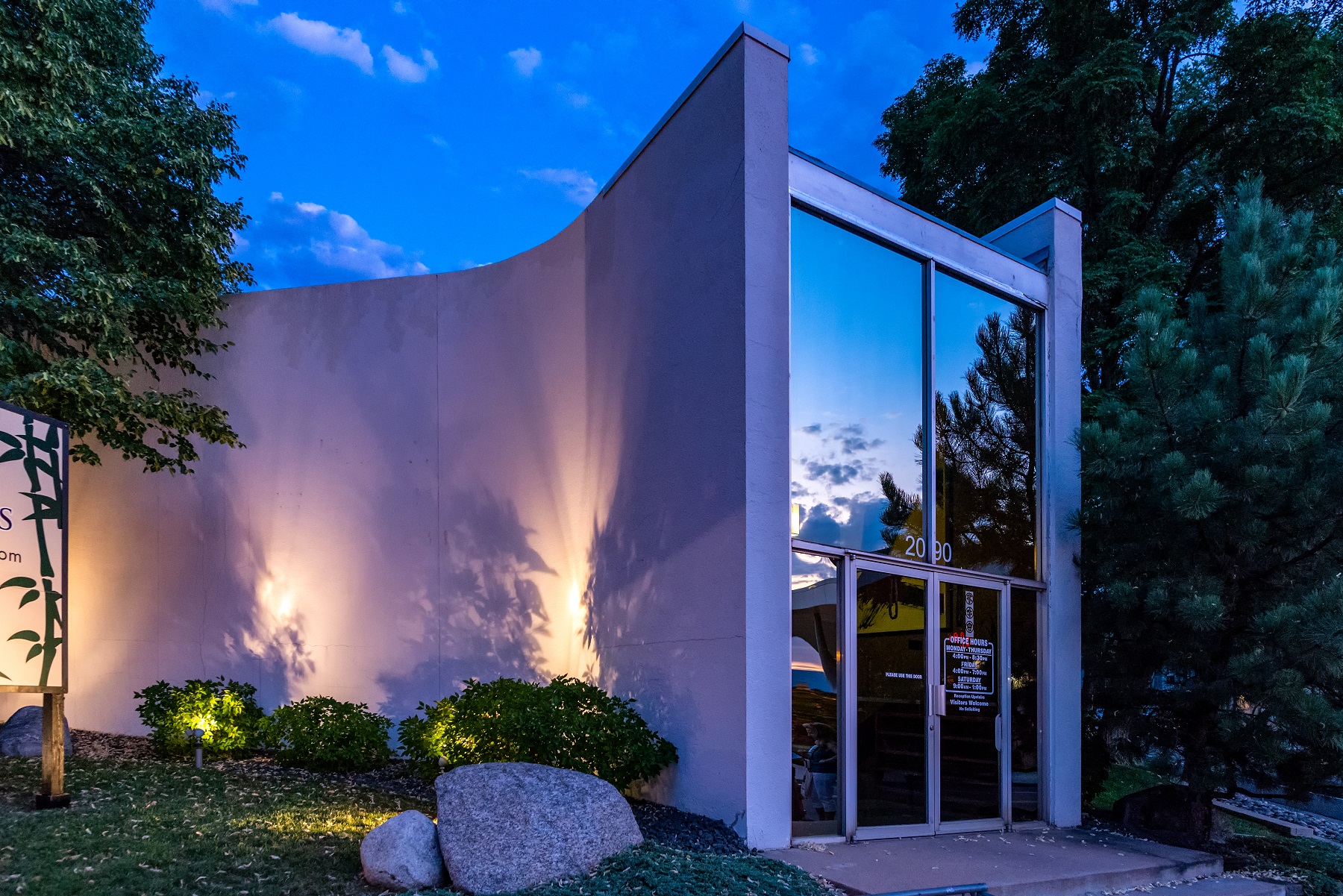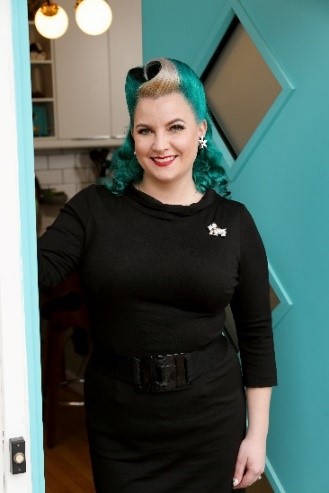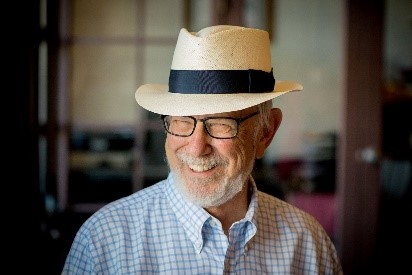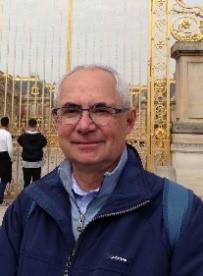9 Architectural Styles of Mid-Century Modern Commercial Buildings

Few places in the Denver Metro area—or even in the country—offer such as vast variety of Mid-Century Modern architectural styles in a well-defined walkable area. Within in a 1.5-mile walk from Downtown Littleton, 10 different types of commercial buildings represent nine architectural styles designed by 17 prominent Modernist architects. The survey report “Commercial Modernism in the Greater West Littleton Corridor, 1950–1980” by Michael Paglia and Diane Wray Tomasso describes the significance of the 77 buildings that were surveyed. Remarkably, 22 are designated Nationally Significant and 20 are designated State Significant buildings;
This represents an impressive 55% of the surveyed properties. In addition, 16 more buildings meet Local Landmark eligibility. In just a 25-minute walk, you can experience 76% of the most significant Mid-Century Modern Commercial buildings in the City.
The nine styles you can view on Littleton Boulevard are defined as follows.

1. Brutalist Style
The European-derived Brutalism style is closely related to the Formalist style. (In fact, the Second Phase International style, Formalism, and Brutalism are heirs to the International style.) For the most part, Brutalism developed as a response to the later work of the Swiss-born French architect Le Corbusier. Brutalism is characterized by unfinished concrete, recessed windows, top-heavy design, and a proclivity for bulk and heft in dense compositions of square and rectangular volumes.
The effect makes a building more visually complex not through ornamentation but through artful repetition of functional features. The style proliferated around the world in the mid-20th century, and Littleton has three significant examples: Heritage High School, Arapahoe Community College, and the Miller Law Center, all designed by Eugene Sternberg. The term was coined in the 1970s by Charles Jencks.
Arapahoe Community College, Architect Eugene Sternberg.

2. Commercial Modern Style
The typical Modernist Commercial structures from the 1950s to 1970s built on West Littleton Boulevard and the surrounding streets are small scale functionalist buildings intended to serve as retail businesses or professional offices. Most of these buildings are rectilinear with either a simple rectangle or a simple arrangement of rectangles. They ordinarily feature flat roofs with either plain, nearly flush fascia or overhanging boxed-in soffits or eaves. However, a few buildings have overhanging canopies, some of which are canted.
These sometimes follow the roof-lines and were intended to protect shoppers from the sun or inclement weather. Michael Paglia and Diane Wray Tomasso coined the term Commercial Modern in 2016, and it is the most prevalent design style on Littleton Boulevard with 35 examples.
Pizza Garden Restaurant/Romano’s Italian Restaurant, 5666 S. Windermere St

3. Expressionist Style
Expressionism is a rare style in post-World War II American architecture, but it found ready acceptance in the Denver area. Expressionism is only vaguely related to the German Expressionist style of the early 20th century, which is why it may be inappropriate to call the American style Neo-Expressionism, as some do. Expressionism’s reliance on theatrical sculptural forms contrasts both the woodsy charm of the Usonian and the crisp rationality of the International and Miesian styles.
The Expressionists picked up the tradition of dramatic building forms that had earlier manifested itself in the United States in the Moderne style (such as the many buildings constructed for the 1939–1940 New York World’s Fair). Whereas Moderne buildings often evoked the speed of a locomotive, Expressionist buildings suggested the jet age. The Expressionist style was never dominant in American architecture because the soaring forms it favored and the experimental materials it preferred were too costly. Expressionist is the second most popular style on Littleton Boulevard, and the Sternberg Courthouse Professional Building is perhaps the most significant example. The origin of the term is unknown.
Marie Seaman Black Realtor Building, Architect Joseph and Louise Marlow.

4. Fantasy Modern Style
Buildings in the Modern Fantasy style from the post–World War II period are heirs to the architectural follies of the 16th to 18th centuries. (A folly is a building with no purpose other than being viewed.) The Modern Fantasy style buildings were primarily designed for corporations, and they were built-in multiple examples—sometimes thousands of them.
In the 1950s and 1960s, chain and privately owned restaurants embraced the Modern Fantasy style.
The giant cartoon cottages that housed the International House of Pancakes restaurants and the parodies of Spanish Colonial missions occupied by the Mexican-themed fast-food outlets of Taco Bell are two examples in Littleton. Michael Paglia and Diane Wray Tomasso coined the term Fantasy Modern in 2018.
International House of Pancakes, 1409 W. Littleton Blvd. Architect Unknown

5. Formalist Style
Antecedents for Formalism in American architecture can be found in France and Italy in the 1930s and 1940s. The style first appeared in the United States in the1950s, and it became a dominant trend in American architecture in the 1970s. By the 1980s, Postmodernism superseded Formalism, with the two styles sharing many characteristics, most notably their references to historicism and decoration. Littleton Boulevard features four Formalist style buildings. The origin of the term is unknown.
Dawson and Company Realty Office Building, 609 W. Littleton Blvd. Architect Unknown

6. International Style
The International style in architecture first appeared in Germany, France, and the United States in the 1920s. By the 1930s, the International style was firmly established in Europe and the United States. After World War II, it became a watershed in American architecture, especially for the design of large buildings. International style increasingly came to influence architecture of the 1950s to the 1970s, and it remains a source of inspiration in contemporary architecture.
International is the third most popular style in Littleton with the Title Guarantee Building being the most significant example. Henry-Russell Hitchcock and Philip Johnson coined the term International style in the 1930s.
Norbeck Interiors, 109 W. Littleton Blvd. Architect Unknown

Littleton 1st industrial Bank, 1109 W. Littleton Blvd. Architect Unknown.
7. Late Modern Style
Beginning in the 1970s, architects in the United States put forward a new style that constituted an updating of earlier Modern styles. Like the earlier Modern buildings, Late Modern architecture was reductive and functionalist. In addition to refining or reformulating earlier Modern concepts, Late Modernism also rehabilitated certain out-of-favor Modernist features such as radial corners, glass blocks, and belt courses. Littleton Boulevard features two examples: United Bank of Denver (now Wells Fargo, 5601 S. Broadway) and the Littleton 1st Industrial Bank (1109 W. Littleton Blvd.), both built at the end of the period of significance. Charles Jencks coined the term in the 1980s.

8. Rustic Modern Style
Rustic Modernism incorporates the influences of vernacular architecture in form and materials. However, Rustic Modernism should not be confused with a genuine vernacular style, which relies on local materials and reflects local traditions and cultural practices. Rustic Modernism style had a national presence and is not associated with any region. The forms of Rustic Modern buildings have been derived from various kinds of rural buildings, including those related to agriculture and mining.
Rustic Modernism incorporates the influences of vernacular architecture in form and materials. However, Rustic Modernism should not be confused with a genuine vernacular style, which relies on local materials and reflects local traditions and cultural practices. Rustic Modernism style had a national presence and is not associated with any region. The forms of Rustic Modern buildings have been derived from various kinds of rural buildings, including those related to agriculture and mining.
Brock’s Eating House Restaurant, 89 W. Littleton Blvd, Architect Eugene Sternberg. Building destroyed in 2020.

9. Usonian Style
Frank Lloyd Wright’s Prairie style was a dominant force in the development of nearly all Modern architecture, including Art Deco, the International style and the Moderne. The Usonian style is based on Wright’s later work and his concept of naturalism in which each architectural project is seen as having a “natural” solution derived from its function and site. Naturalism is, in this sense, strongly associated with functionalism. The Usonian style first appeared in Wright’s work of the 1930s, engendering a school of its own with many followers.
In the 1940s and 1950s, the Usonian style was firmly established in the United States. At that time, in the realm of important and high-status commissions, the Usonian was the only real alternative to the International style, though Usonian was principally used in residential design. Littleton Boulevard features five examples of Usonian style with Victor Hornbien’s Smedley Dental Clinic as one of the finest commercial examples in Colorado. Frank Lloyd Wright coined the term Usonian style in the 1930s.
Francam Realty and Insurance, 1150 W. Littleton Blvd, Architect Rene Chouzenoux
The 17 currently identified architects (and their lifespan if known) represented on Littleton Boulevard are:
A-B-R Partnership Architects / Barker Rinker Seacat / BRS Architects
Burke, Kober, Nicolais & Archuleto (Los Angeles)
Colin Stewart
Earl Chester Morris (1903–1964)
Eugene D. Sternberg (1915–2005)*
Eugene Frazier
Frank Pol: Donald R. Roark (1931–2014)
Joseph Patrick Marlow (1912) and Mary Louise Marlow (1916)
Laramey and Butts
Miles Lantz
Raymond Heyl
Rene Couzenoux
Richard Crowther (1910–2007)
Robert Max Morris (1908–1988)
Temple Hoyne Buell (1895–1990)
Todd Har
Victor Hornbein (1913–1995)
*Sternberg was the most prolific and influential Littleton architect of the Mid-Century Modern building era.
















